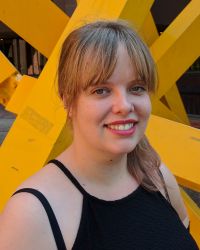Sarah Morrison-Smith, Christina Boucher, Aleksandra Sarcevic, Noelle Noyes, Catherine O’Brien, Nazaret Cuadros, and Jaime Ruiz. 2022. Humanities and Social Sciences Communications 9, 1: 125
Supporting E-Science Through HCI
We have established a research program that aims to support life science research that requires extensive use of computational tools (often referred to e-Science in the literature). Our research in this area consists of two main thrusts; research supporting user engagement with genomic analysis tools, and understanding how technology can support large multidisciplinary research projects. The research projects in this domain include collaborators in computer science, clinical sciences, veterinary medicine, microbiology and immunology, and food science.
Our work in investigating techniques to support end-users (often users with little technical background) with genomic tools is a result due a strong collaboration with Drs. Keith Belk, Christina Boucher and Paul Morley. Research in regard to this thrust has included examining how web technologies can lower the learning curve needed to use genomic analysis tools and examining new visualization techniques to find repeated nucleotide sequences in DNA. We made significant progress in understanding the role that bioinformatics software plays in life science research through a formalized study examining the use of bioinformatics software by life science researchers. Results from our study confirm much of the prior anecdotal evidence of standalone bioinformatics software usability. More importantly, we showed that usability issues and life scientists’ lack of expertise in applying computational methods to biological research is limiting their research objectives and contributing to researchers’ reliance on computational experts to conduct their research. Our results also demonstrated that while the reliance on domain experts is resulting in collaborative research projects, the computational tools used in these projects not only do not facilitate collaboration but make it more difficult to share data due to the size of the results returned.
In follow up work, we extended this work to better understand the use of technology in e-Science and the design needs of tools that facilitate large-scale research collaborations. The results of this work showed that: (1) large collaborative inter-disciplinary and geographically diverse research is unavoidable in life science research, (2) the need for expertise outweighs the difficulties associated with geography, (3) geography adds communication challenges, and lastly, (4) current technology is ineffective for scientific communication. These results will serve as the foundation of my lab’s current work exploring new ways technology can enable effective interdisciplinary and geographically diverse communication in large e-Science projects.
People
Funding
Related Publications
Sarah Morrison-Smith, Jaime Ruiz, Lydia Chilton. 2021. Graphics Interface 2021 (2021).
Sarah Morrison-Smith and Jaime Ruiz. 2020. SN Applied Sciences 2, 6: 1096.
Xiang Yang, Noelle R. Noyes, Enrique Doster, Jennifer N. Martin, Lyndsey M. Linke, Roberta J. Magnuson, Hua Yang, Ifigenia Geornaras, Dale Woerner, Kenneth L. Jones, Jaime Ruiz, Christina Boucher, Paul S. Morley, and Keith E. Belk. Appl. Environ. Microbiol. AEM.00078-16; Accepted manuscript posted online 12 February 2016, doi:10.1128/AEM.00078-16
Noelle R Noyes, Xiang Yang, Lyndsey M Linke, Roberta J Magnuson, Adam Dettenwanger, Shaun Cook, Ifigenia Geornaras, Dale E Woerner, Sheryl P Gow, Tim A McAllister, Hua Yang, Jaime Ruiz, Kenneth L Jones, Christina A Boucher, Paul S Morley, Keith E Belk (2016) eLife 5:e13195
Sarah Morrison-Smith, Christina Boucher, Andrea Bunt, and Jaime Ruiz. 2015. In Proceedings of the 2015 British HCI Conference (British HCI ’15). ACM, New York, NY, USA, 230-238. DOI: http://dx.doi.org/10.1145/2783446.2783581



